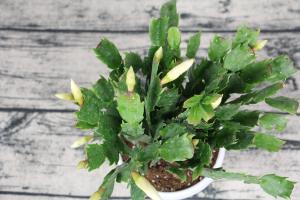Can You Plant Tomatoes Next to Pumpkins?
When planning your garden, it's important to consider which plants work well together. Companion planting is a technique that involves pairing plants that benefit each other, either by providing nutrients or by repelling pests. So, can you plant tomatoes next to pumpkins? The answer is yes, but let's dive into the benefits and potential drawbacks.
Benefits of Planting Tomatoes Next to Pumpkins
Tomatoes and pumpkins have different nutrient requirements, so they won't compete for the same resources. In fact, they can even help each other out. Pumpkins are heavy feeders that require a lot of nitrogen, while tomatoes need phosphorus and potassium. By planting them together, you can provide them with the nutrients they need without depleting the soil.
Another benefit of planting these two crops together is that pumpkins can help shade the soil, which can help keep tomatoes cool during hot summer months. This can be especially beneficial in areas with dry, hot climates. Additionally, pumpkins have a sprawling growth habit that can help suppress weeds and prevent erosion, which can benefit both plants.
Potential Drawbacks of Planting Tomatoes Next to Pumpkins
While there are many benefits to planting tomatoes and pumpkins together, there are a few potential drawbacks to consider. First, both plants are susceptible to powdery mildew, a fungal disease that can spread quickly. If one plant becomes infected, it can easily spread to the other. To avoid this, make sure you plant them in an area with good air flow and avoid watering them from above, which can promote fungal growth.
Another potential drawback is that pumpkins can be quite aggressive in their growth habit and may shade out tomatoes if they're not pruned back regularly. This can reduce tomato yields and also make it more difficult to harvest fruit. To avoid this, make sure you plant varieties of pumpkin that are less aggressive and prune them back when needed.
Companion Plants for Tomatoes and Pumpkins
If you're looking for other plants to pair with your tomatoes and pumpkins, there are a few options that work well together. For example, marigolds are known to repel pests like nematodes and aphids, which can help protect both plants. Additionally, beans are nitrogen-fixing plants that can help provide nutrients for both tomatoes and pumpkins. You could also consider planting basil or oregano, which can help repel pests and improve the flavor of your tomatoes.
Final Thoughts
So, can you plant tomatoes next to pumpkins? Absolutely! These two plants are complementary and can benefit each other in many ways. Just make sure to consider potential drawbacks and pair them with other companion plants to create a thriving garden.

 how many times do yo...
how many times do yo... how many planted tre...
how many planted tre... how many pine trees ...
how many pine trees ... how many pecan trees...
how many pecan trees... how many plants comp...
how many plants comp... how many plants can ...
how many plants can ... how many plants and ...
how many plants and ... how many pepper plan...
how many pepper plan...































